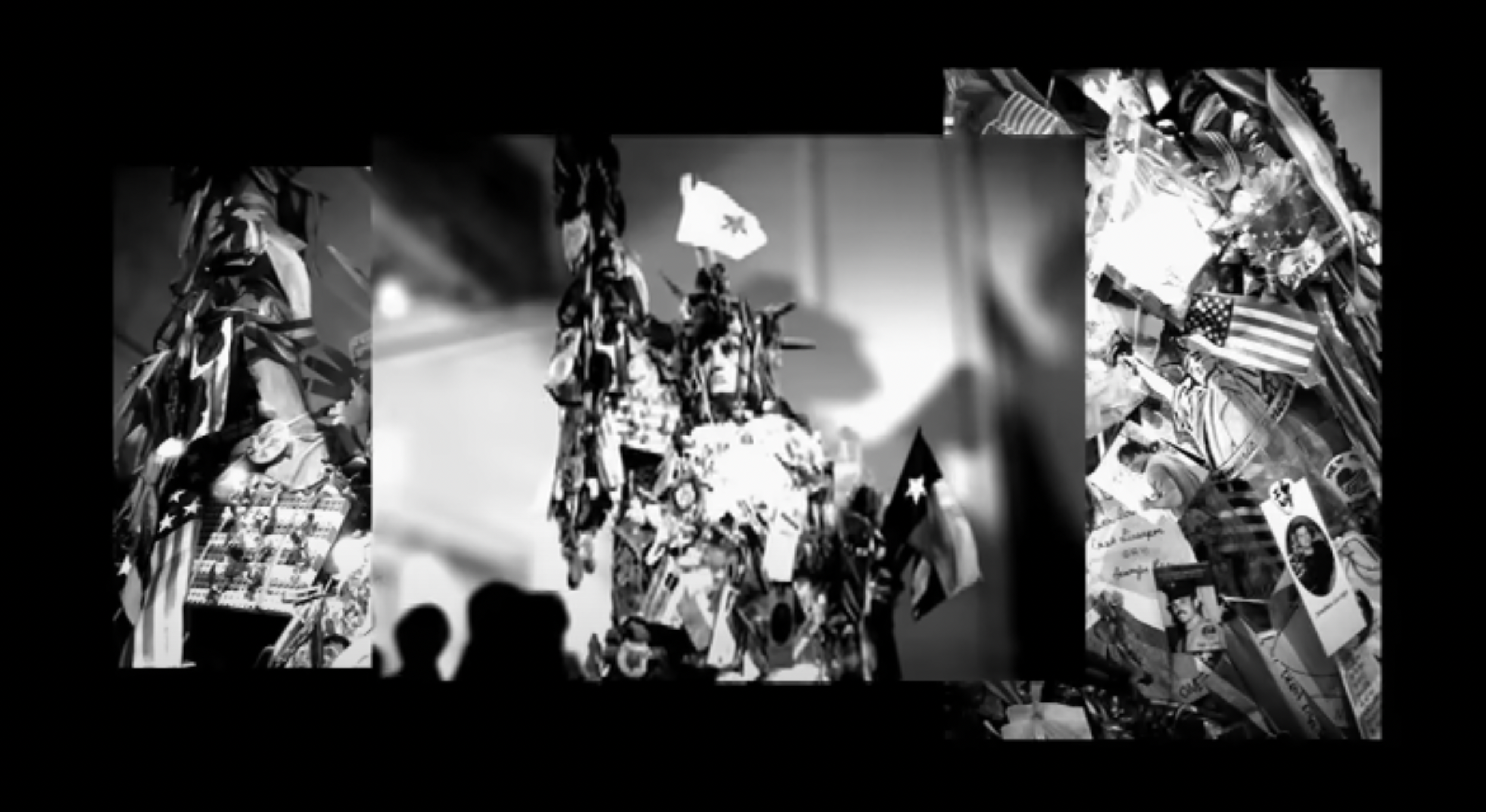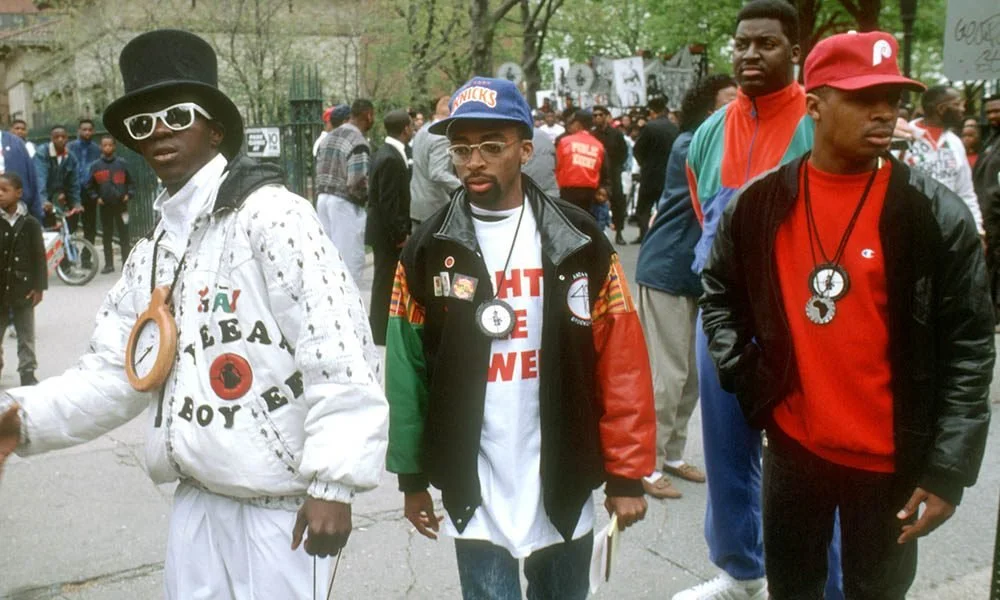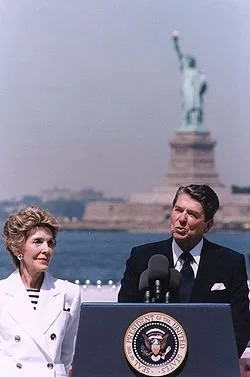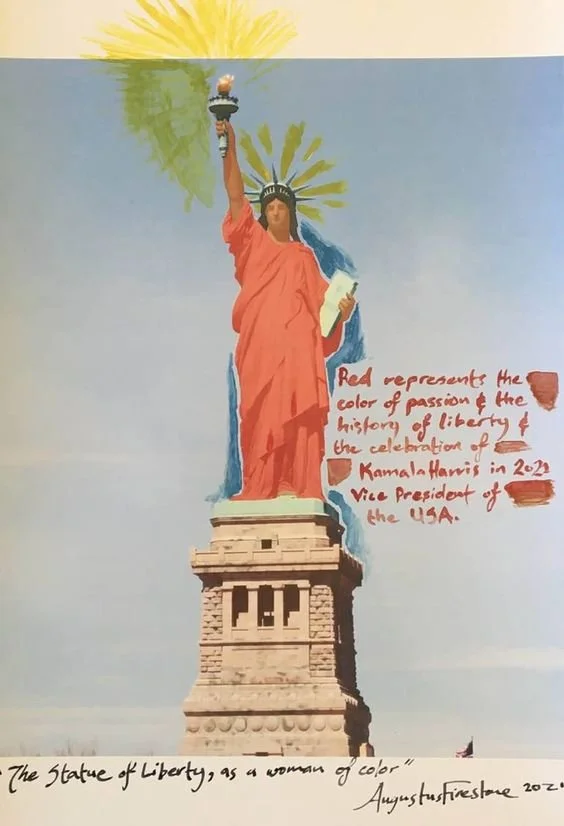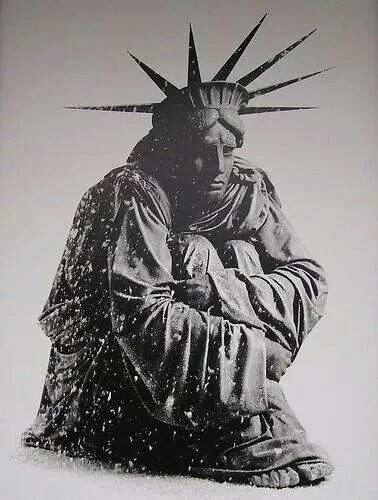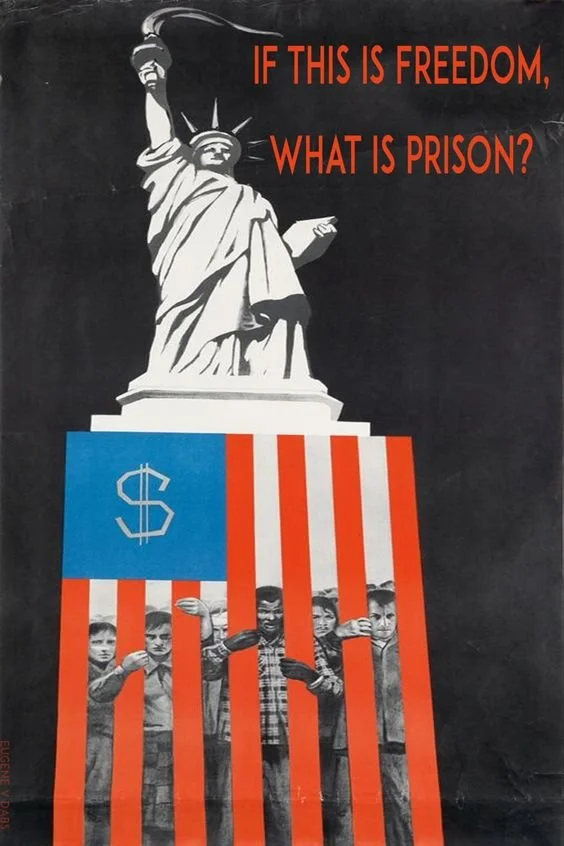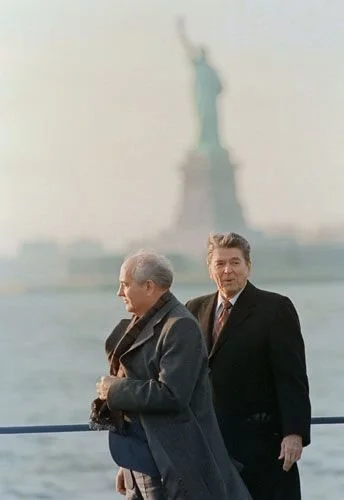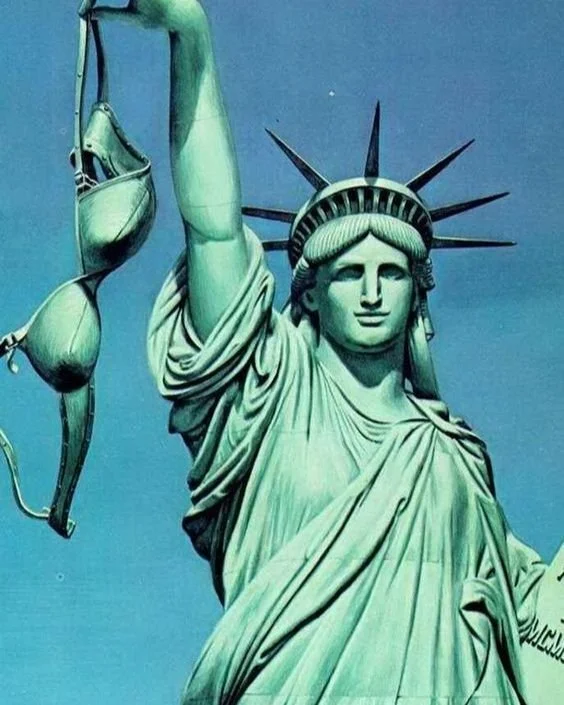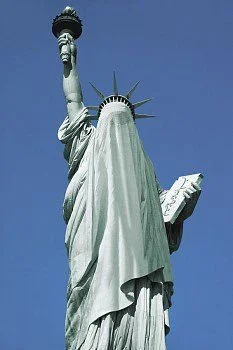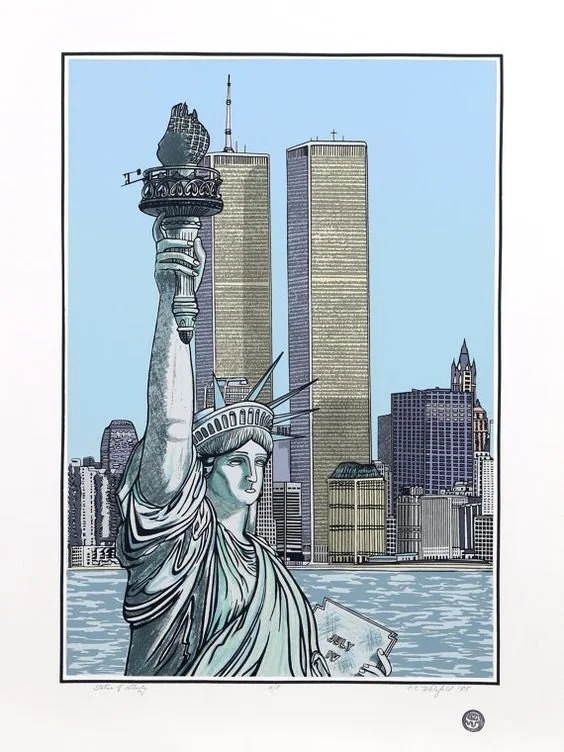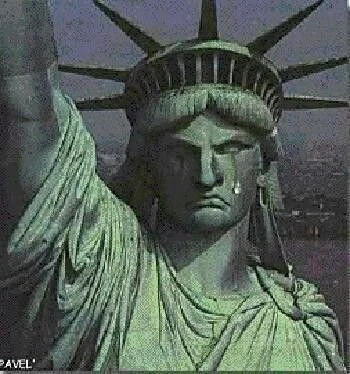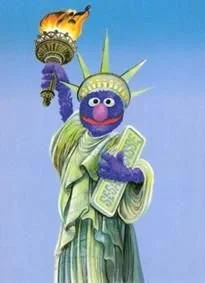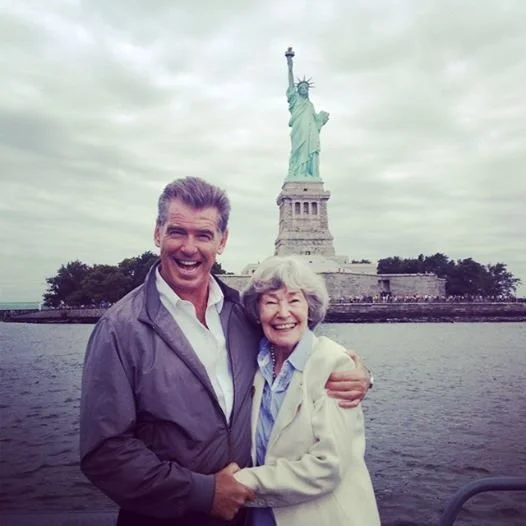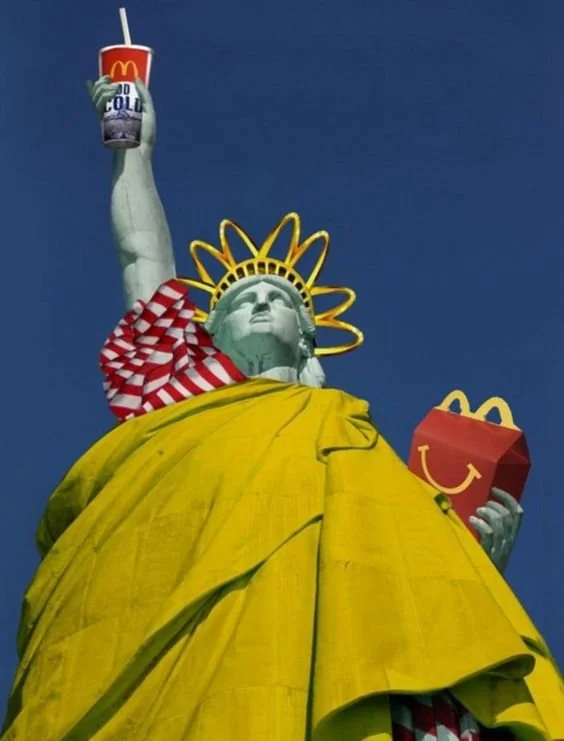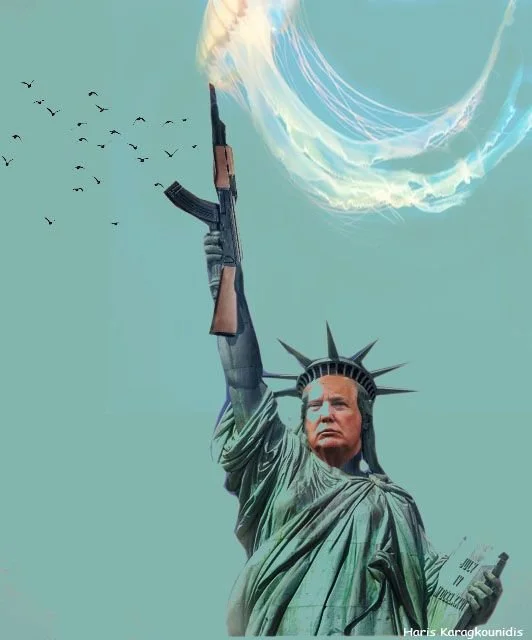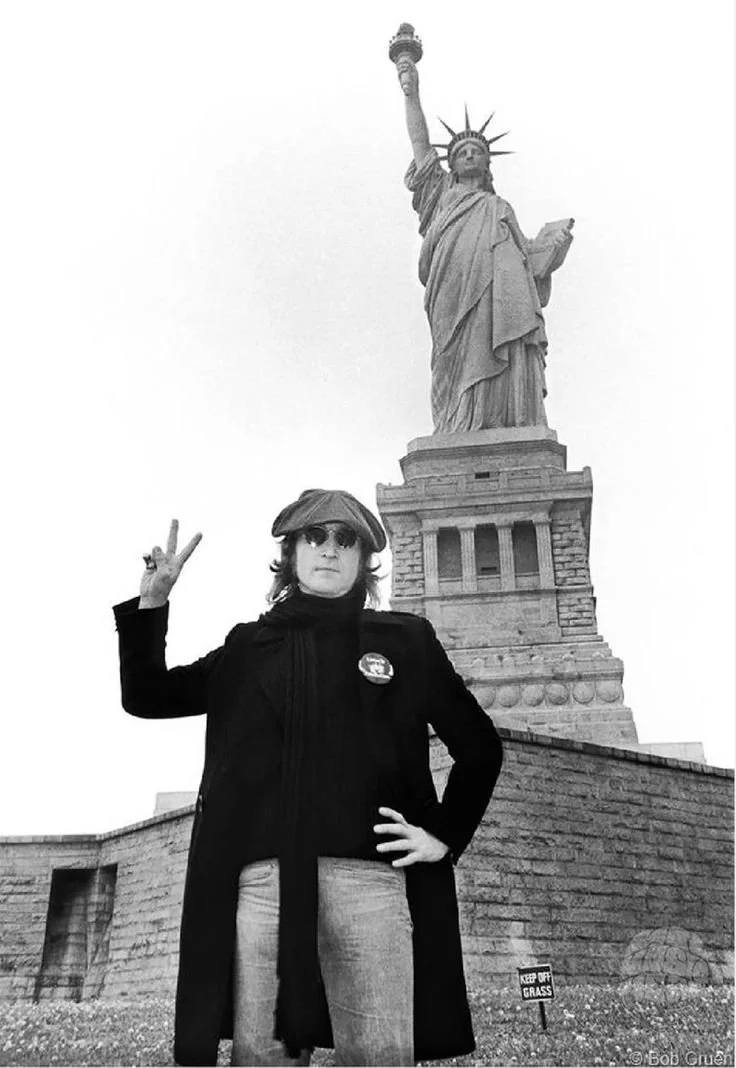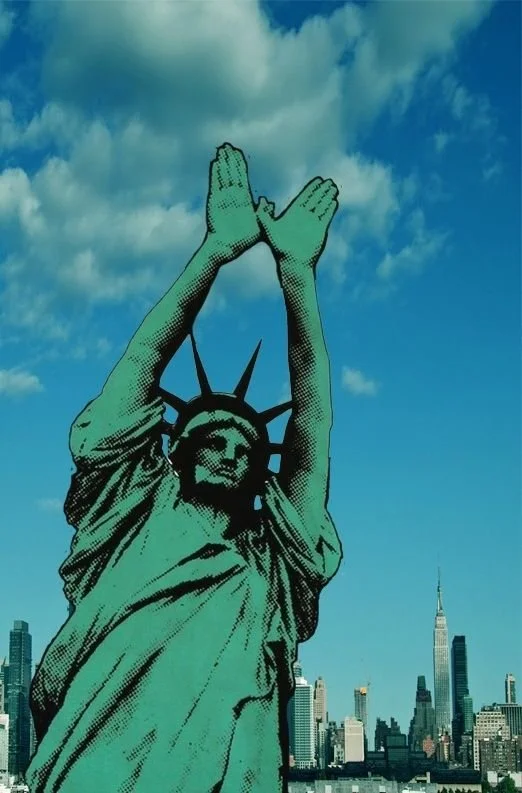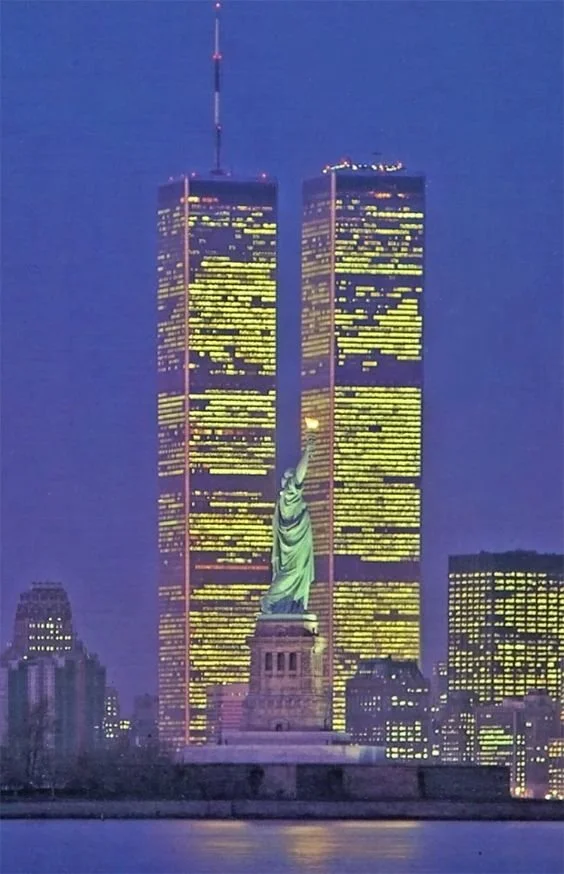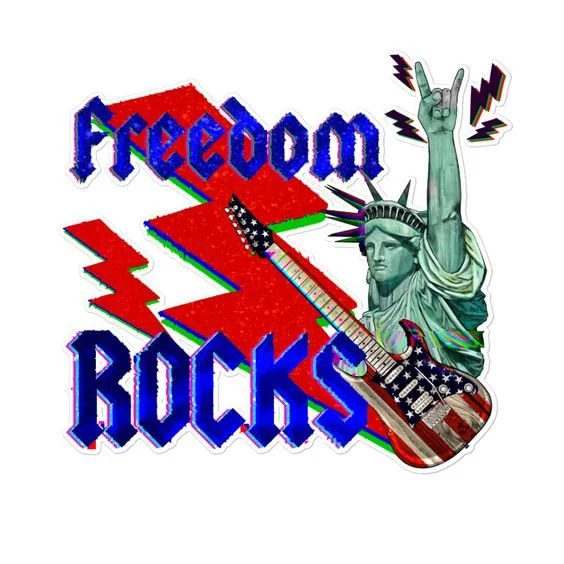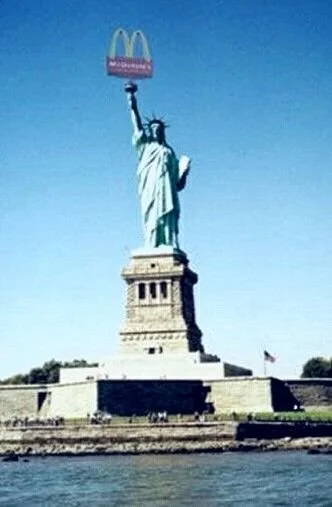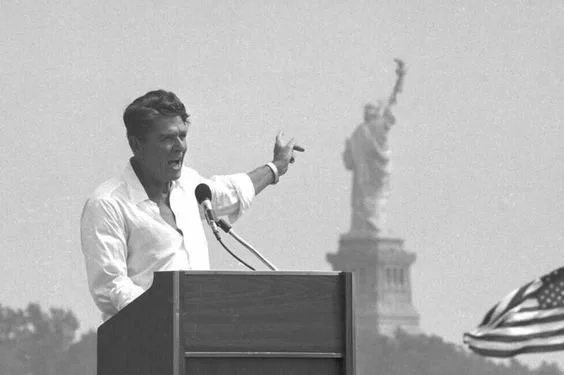
The Statue of Liberty
Today and Tomorrow
The Statue of Liberty will continue to act as a potent, contested symbol in U.S. life. These contested meanings undoubtedly include the gap between the reality of political oppression, notions of inequality and the possibility of liberty and justice.
The Statue of Liberty is one of the most recognizable icons in all of popular culture in the United States and beyond. The statue has served as a backdrop in movies, television shows, photography and many other forms of media. While many uses of this icon are meant to connotate notions of freedom, democracy, and immigration; there are many uses of the statue in an iconoclastic fashion. For individuals and artists who want to critique the U.S. government, policies and other aspects of culture, the statue is a means of providing a direct commentary for protest. There are hundreds if not thousands of renditions of the statue where it’s form is altered to deliver a particular message.
Some of the most volatile socioeconomic issues in the United States are the disparities in wealth, equality and a history of racism that the statue with its roots in abolition was meant to address by its very creation. Perhaps no other demographic group in the history of the U.S. has suffered the ill effects of these disparities than Black Americans. The statue has been used by racists to mock Black culture. Simultaneously, many Black artists and groups have used the statue as a literal physical backdrop to social protests on Liberty Island, or have addressed social critiques by altering or providing an ironic context to the meaning of the statue. From the Harlem Renaissance to contemporary artistic outputs, Black Americans have created many of the most unique forms of protest art, music and media in U.S. popular culture.
Perhaps the most prominent form of Black popular culture over the last five decades has been the rise of HipHop Culture. While many associate Hip Hop solely with rap music, there are many other aspects of this cultural phenomenon that have become significant parts of American and global culture. Hip Hop also includes DJing, turntablism, breakdancing, graffiti, beatboxing, entrepreneurship and fashion. Pioneered by Black, Latino and Caribbean Americans, the rapping and DJing foundations of Hip Hop emerged from the Bronx, New York in the 1970s. It is well established in Hip Hop lore that the hip hop scene started at a party in the Bronx at a recreation center featuring DJ Kool Herc who was one of the first DJs to take parts of songs and recombine or mix them to create a constant dance groove. Rap music has become such a popular form of social commentary that the rapper Chuck D has called rap music lyrics “Black America’s CNN”. Now 50 years old as an artistic form, Hip Hop culture is synonymous with American popular culture in many ways.
The Statue of Liberty has been represented in many different aspects of Hip Hop culture. The rapper Ice Cube was a member of the foundational group N.W.A. which is known for a critical view of policing, racism and social inequities that started in the 1980s. Perhaps one of the most iconic images is one of the rapper Ice Cube with his hands around the neck of a replica of the statue on the streets of New York. One can ascertain that this image builds on the larger critique of power in America Ice Cube has addressed on numerous songs and albums such as AmeriKKKa’s Most Wanted, released in 1990.
Jay-Z - "Empire State of Mind" (featuring Alicia Keys) While the video does not focus solely on the Statue of Liberty, the statue appears as part of the broader celebration of New York City.
Beastie Boys - "No Sleep Till Brooklyn" The music video features the Statue of Liberty as part of its homage to New York City.
Public Enemy - "Fight the Power" This classic song and video from Public Enemy use imagery of the Statue of Liberty as a backdrop for their commentary on social and political issues.
Nas - "If I Ruled the World (Imagine That)" In this iconic video, the Statue of Liberty is featured prominently as Nas imagines a world with more equality and justice.
The rapper Philthy Rich penned a track titled Statue of Liberty in 2017 while as recently as the summer of 2024 the rapper Ice Spice appeared in a music video twerking as the Statue of Liberty. There are also countless depictions of the statue breakdancing and even throwing up the hand symbol for the group Wu-Tang Clan. And, it is well established that the rapper Method Man of Wu-Tang Clan actually worked at the Statue of Liberty calling it “the best job I ever had” and was once named employee of the month.
Another foundational part of Hip Hop culture is the creation of graffiti. Some of the most iconic images that connote early Hip Hop culture are the ‘bombing’ of subway cars, or, covering the sides of trains with art often done by crews. Many iconic artists first seen as criminals are now celebrated in art history as innovators now celebrated in galleries and exhibitions. Graffiti artists in the 1970s and 1980s often used iconic symbols of the city, such as the Statue of Liberty, to convey messages of pride, freedom, and resistance. In addition to subway cars, there are countless depictions of the statue depicted in graffiti ‘throw-ups’ on walls as a form of street art. One notable artist, Lee Quiñones, depicted the Statue of Liberty in his subway graffiti. His piece, titled "Liberty," featured a stylized version of the statue, reflecting themes of freedom and the city’s diverse cultural landscape. The Statue of Liberty is featured in a graffiti piece in the introduction of the landmark film Wild Style which features Lee Quiñones as the character Zorro. This 1983 film is widely regarded as one of the first hip-hop films. The movie showcases various elements of hip-hop culture, including graffiti, breakdancing, rapping, and DJing. The late graffiti artist Keith Haring also used the Statue of Liberty in prints and as a piece of statuary covered with his famous drawings.
Below are several depictions, photographs and memes of the Statue of Liberty pertaining to Black culture protest and beyond to incorporate critiques of politics, capitalism and as propaganda piece.
Rapper Ice Cube choking a replica of the Statue of Liberty
Ronald and Nancy Reagan. Speech delivered with the Statue of Liberty as backdrop for political theatre.
The Statue of Liberty as a Woman of Color, Augustus Firestone
Freezing Statue of Liberty, Mark Yurkiw
Statue of Liberty, Keith Haring 1986
Soviet CCCP Russian Anti Capitalist Capitalism Propaganda Poster "If This Is Freedom What Is Prison"
Photograph of President Reagan meeting with General Secretary Gorbachev on Governor's Island
MAD Magazine June 1975
Statue of Liberty Veiled
Statue of Liberty as Michael Jordan meme
Statue of Liberty, Cindy Wolsfeld
Statue of Liberty Crying
State of Liberty as Grover from Sesame Street
Pierce Bronson and Mother visit the Statue of Liberty, Statue of Liberty Foundation
Statue of Liberty crossed with McDonalds
Trump with Rifle and Jellyfish as Statue of Liberty
John Lennon with the Statue of Liberty in background
Statue of Liberty signaling Wu-Tang Clan
Statue of Liberty between the Twin Towers of the World Trade Center
The editorial cartoon was created during Donald Trump’s first term in office as president. Across California, Donald Trump’s 2024 election victory was seen as a cause for concern among organizers within the LGBTQ+ community. Image: Rob Sheridan.
Statue of Liberty with Guitar, Freedom Rocks
Statue of Liberty wearing Levi's Jeans 1970s
Statue of Liberty Holding McDonald's Sign
Ronald Reagan Delivering a Speech with the Statue of Liberty as Backdrop
Diagram of David Copperfield's plan to make the Statue of Liberty disappear
Ethnographic and Social Network Analysis of the Statue of Liberty
Over the past ten years, public sculpture in the United States has come under renewed scrutiny, with several campaigns focused on the removal of statues commemorating the confederacy, settler colonialism or imperialism. Yet this is not especially new; public sculpture has always been politicized and, in the United States, public sculpture has been racialized. As the Statue was being transported from France to the U.S. in the 1880s, hundreds of statues were being erected through the U.S. South glorifying the confederacy and legitimating segregation in the Jim Crow era (Thompson 2022). The State of Liberty was no less immune to political interpretation, ranging from a celebration of democracy to Union victory and emancipation.
Perhaps because the State of Liberty represents an idea rather than a person or an event, it continues to be invested with a wide range of political meanings, both reactionary and progressive. As one of the most potent symbols in the United States, it seems likely that the Statue will continue to be charged with meaning into the future.
The figures below represent tweets collected in 2022 and 2023–nearly 200,000 in total. The nodes (the dots) represent frequent words, and the edges (the lines) show their co-occurrence with other words–e.g., “statue” linked with “liberty.” Together, these co-occurrences constitute a “semantic network,” a map of opinion and discourse.
(Figure 1: Semantic Network showing the co-occurence of words in tweets mentioning the State of Liberty in November 2022)
The first semantic network shows Twitter discourse around Texas Governor Greg Abbott’s busing of immigrants from Texas to New York City, an act that Pennsylvania Senator John Fetterman criticized as “a stunt” and one that many identified as kidnapping and human trafficking. On Twitter, the story precipitated a debate over who should be allowed to come into the United States, with many quoting Emma Lazarus’s sonnet, “The New Colossus,” and advocating for a country open to immigration. Still others sought to pathologize immigrants as criminals, and differentiated them from the largely European populations that immigrated through Ellis Island between 1892 and 1924.
The second graph shows a April 2023 search for “Statue of Liberty.” Again, tweets were reduced to word-pairs, which were then graphed by the frequency of their co-occurrence. Finally, the word pairs were summarized into the headings you see above. They include a bewildering variety of references, from COVID to comparisons of historic photos of the Statue being used to “disprove” climate change, to anti-Chinese sentiments and pro-immigration. On the other hand, if we were to delve deep into the lower-right of the graph, we would find tweets that articulate other meanings for the State of Liberty: ones that remind us that Bartholdi’s model for “Egypt Carrying the Light to Asia” was most likely a dark-skinned Egyptian peasant, or that the broken chains at the Statue’s feet were a memorial to emancipation. Still others ask us to reflect on Reverent Martin Luther King’s 1967 speech, “The Other America,” where he critiques a Statue that only recognizes its “white exiles.”
From this brief survey of social media data, we can see the ways the meaning of the Statue of Liberty shifts. At various times, and in accordance with the political context of the moment, It can be a celebration of democracy, a reminder that democracy has yet to be achieved, a stanchion to justice, a critique of injustice, a signpost of equality and a gatekeeper maintaining inequality.
In the future, there will no doubt be other meanings attached to the Statue of Liberty that appropriate it into varied political debates. It is a testament to the power of the Statue: it telescopes the fears and hopes of citizens and has become a rorschach for race, immigration and belonging in the United States, and a measure of justice for people around the world. “Liberty,” like other abstractions, can take on infinite meanings but, behind all of these, there is still the possibility of a critical and emancipatory Statue that reminds us of the struggle for justice and the equality yet to come.

